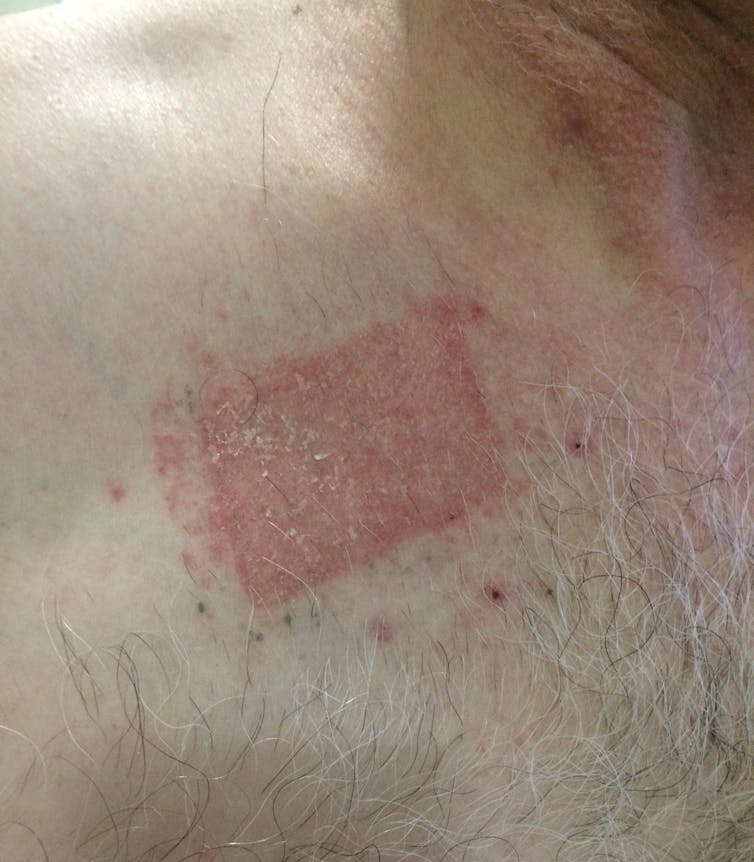Dry Spots On Skin Body
Dry Spots On Skin Body 5,5/10 2814 votes
Medically reviewed by Drugs.com. Last updated on March 4, 2020.
The decline in production of thyroid hormone in the body can affect the skin to develop dry spots like scales. Medicinal drugs used to treat underlying conditions in the body might have a side effect of dry patches on the skin of the face. This common condition is often mistaken for dry, sensitive skin. Babies and children usually get crusty spots on their chins and cheeks, but scaly skin can show up anywhere on the body. Rich in omega-3 essential fatty acids, it helps hydrate the skin, bringing your dry, flaky skin moisture from within. You can also take capsules of flaxseed oil if you prefer, but your body will.

- Health Guide
What is Melasma (Chloasma)?
Melasma is a condition in which areas of the skin become darker than the surrounding skin. Doctors call this hyperpigmentation. It typically occurs on the face, particularly the forehead, cheeks and above the upper lip. The dark patches often appear on both sides of the face in a nearly identical pattern. The darker-colored patches of skin can be any shade, from tan to deep brown. Rarely, these dark patches may appear on other sun-exposed areas of the body.
Melasma occurs much more often in women than in men, and usually is associated with hormonal changes. That is why the dark patches develop often during pregnancy, or if a woman is taking hormone replacement therapy (HRT) or oral contraceptives. Melasma during pregnancy is relatively common. Sometimes it is called the 'mask of pregnancy' or 'chloasma.' The dark patches typically last until the pregnancy ends.
The most important factor in the development of melasma is exposure to sunlight. Using medications that make you sensitive to the sun (photosensitizing) can increase your risk of developing melasma. These can include some cosmetics and medicines used to treat ovarian or thyroid problems. Protection from the sun is a necessary part of treatment of melasma. For example, women who are pregnant or who take a hormone medication and avoid the sun are less likely to develop melasma than are those who spend a lot of time in the sun.
Symptoms
Darker patches of skin appear on the forehead, temples, cheeks or above the upper lip. The symptoms are strictly cosmetic — you won't feel ill, and the darker skin won't be sore.
Dry Bumps Skin On Body
Diagnosis
A doctor will diagnose melasma simply by looking at your skin. Your medical history will help to determine any factors that may have caused the disorder.
Your doctor may use a special lamp that gives off ultraviolet light. This allows the doctor to see patterns and depth of skin discoloration more clearly.
Expected Duration

The dark patches typically last until the pregnancy ends or you stop taking the hormonal medications and protect from the sun. The patches gradually fade over many months. In some people, the discoloration never entirely disappears.

Prevention
The best way to prevent melasma is to limit skin exposure to the sun. If you go out in the sun, take these preventive measures:
- Wear a hat with a brim to shade and protect your face.
- Apply sun block (such as zinc oxide or titanium dioxide) to vulnerable areas.
- Use sunscreen that protects against both ultraviolet A and ultraviolet B radiation. The sunscreen should have a sun protection factor (SPF) of at least 30.
Treatment
As hormones stabilize, the dark patches of melasma usually fade. Women who develop melasma as a result of pregnancy often see the patches fade months after the baby is born. Women who take oral contraceptives or hormone replacement therapy often see the patches fade once they stop taking the medications.
Red Dry Spots On Body
A few options may help fade or treat dark patches:
Hard Dry Spot On Skin
- Hydroquinone is a cream that takes pigment out of the skin. It blocks the natural chemical process that leads to the creation of melanin, the substance that makes skin dark.
- Tretinoin is a type of vitamin A that helps to increase the rate at which dead skin cells fall off and new ones appear. This makes the melasma patch fade more quickly as the pigmented cells are shed.
- Azelaic acid cream appears to work by slowing down or stopping the production of pigment, the substance that makes the skin darker.
- Chemical peels are liquid solutions applied to the skin to provide a mild chemical burn, similar to sunburn. Over time, the burned layers peel off, leaving fresh, new skin. Chemical peels vary in strength. Glycolic acid is among the mildest, and therefore has a lower risk of causing scarring or skin discoloration. Chemical peels may be used if melasma does not respond to other treatments.
- Intense Pulsed Light therapy utilizes certain wave lengths of light to target and remove pigmented areas of skin.
When To Call a Professional
See your doctor if you develop any unexplained discoloration of the skin. Although melasma does not require treatment, a doctor can distinguish melasma from other skin disorders that may need to be treated.
Prognosis
Much of the discoloration will fade or disappear once hormones stabilize and you stay out of the sun. For people who find the discolorations unsightly, treatment may help to fade stubborn patches. You also can use cosmetics to even out the skin color.
Learn more about Melasma (Chloasma)
Associated drugs
IBM Watson Micromedex
External resources
American Academy of Dermatology
http://www.aad.org/
National Institute of Arthritis and Musculoskeletal and Skin Diseases
http://www.niams.nih.gov/
Dry Itchy Patches On Skin
Further information
Always consult your healthcare provider to ensure the information displayed on this page applies to your personal circumstances.